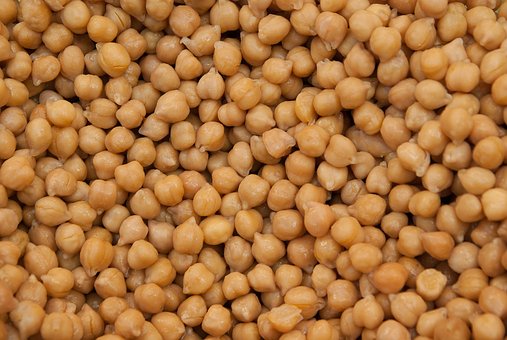
Scientists crack genetic code to develop high-yield chickpea

In a major breakthrough, a global team of scientists, led by the Hyderabad-based International Crops Research Institute for the Semi-Arid Tropics (ICRISAT), have successfully completed genome sequencing of chickpea (Bengal gram or chana) to identify genes for tolerance to drought and heat.
This is significant on several counts. The complete genome sequencing of multiple varieties of chickpea, grown in different countries, will help identify the genes that are tolerant to drought and heat. This will pave the way for genomics-assisted breeding to make the Indian variety more drought-resistant to increase the production and productivity of this protein-rich pulse.
This is the largest-ever global initiative in the area of genome sequencing involving scientists from 21 research institutes across the world including India, China, United States, France, Kenya and Ethiopia.
“In order to meet the protein requirements of the growing Indian population, we need to increase the production of pulses like chickpea. We need to ensure that they are grown in summer season as well. The genome mapping to identify the genes tolerant to drought and heat is the first important step towards that direction,” Rajeev Varshney, who led the research team, told The Federal.
After a three-year long painstaking research, the global team completed genome sequencing of 429 chickpea lines from 45 countries. The major implications of the research to the agricultural community are the potential development of newer varieties of chickpea with higher yields, which are disease-and-pest-resistant, and better able to withstand the vagaries of weather.
Climate change main culprit
India needs about 30 million tonnes of pulses to meet the protein needs of the people. On an average, the country produces about 20 million tonnes a year including 8 to 9 million tonnes of chickpea. About 4 million tonnes of pulses were imported last year.
“At present, winter is the sowing season for chickpea in India. If we have to increase its production and productivity, we need to ensure that the crop is grown in summer months as well. For that to happen, the Indian variety has to be made heat and drought-tolerant,” the scientist explained.
The study showed that more than 90% of the chickpea cultivation area is in South Asia. Drought and increasing temperatures are found to be the cause for more than 70% yield loss in chickpea globally. Chickpea being a cool season crop, is likely to suffer further reduction in productivity due to rising temperatures.
The results of the research have now been published in ‘Nature Genetics Online. It also provides insights into the crop’s genetic diversity, domestication and agronomic traits. The study also mapped the origins of chickpea and its ascent in Asia and Africa.
The team, in close collaboration with BGI-Shenzhen, China, involved 39 scientists from leading research institutes world over.
“The genome-wide association studies identified several candidate genes for 13 agronomic traits. For example, we could identify genes (e.g. REN1, β-1, 3-glucanase, REF6) which can help crops tolerate temperatures up to 38 degrees centigrade and provide higher productivity,” said Varshney, Research Programme Director at ICRISAT.
As the biggest consumer of pulses in the world, India is facing an increasing production gap. The new research could take India closer to attaining self-sufficiency in pulse production.
Next mission
“Having identified the genes that have greater tolerance for heat, our next mission is to go for genomics-assisted breeding to make the existing Indian variety of Chickpea more drought-resistant,” Varshney said.
Efforts would be made to explore the possibility of raising a second crop of chickpea in March-April months.
“The DNA of the chickpea lines will be screened and the lines which have good genes that are tolerant to heat and drought will be moved to the fields. The process will take three to four years before better varieties can be handed over to the ICAR (Indian Council of Agricultural Research),” the scientist said.
Chickpea Origins
The study also confirms that chickpea came to India from the Fertile Crescent/ Mediterranean via Afghanistan and may have been introduced back to the primary centres of origin after 200 years.
The study speculates about the possible introduction of chickpea to the New World directly from Central Asia or East Africa, rather than the Mediterranean.
“Our study indicates Ethiopia as a secondary centre of diversity and also maps a migration route from the Mediterranean/ Fertile Crescent to Central Asia, and in parallel from Central Asia to East Africa (Ethiopia) and South Asia (India),” Varshney added.
The study established a foundation for large-scale characterisation of germplasm, population genetics and crop breeding. It also helped understand domestication and post-domestication divergence of chickpea.
“This new-found knowledge will enable breeders to enhance the use of diverse germplasm and candidate genes in developing improved (climate-change ready) varieties that will contribute significantly to the increased productivity and sustainability of agricultural development in developing countries,” said Peter Carberry, Director-General, ICRISAT.
Highlighting the importance of the study, Marie Haga, Executive Director, Global Crop Diversity Trust based in Germany, said, “This deeper understanding of the crop could enable scientists to breed new varieties that are both highly productive and resilient to climate change, benefiting farming communities in developing countries”.
The study was done in close collaboration with partners from National Agricultural Research Systems.
“This is a significant contribution to global agricultural research and these scientific solutions will help mitigate issues the world is facing right now. Science is key to ongoing efforts within ICAR and ICRISAT and also the way forward for agriculture in the country,” said Dr Trilochan Mohapatra, Secretary, Department of Agricultural Research and Education and Director General of ICAR.


